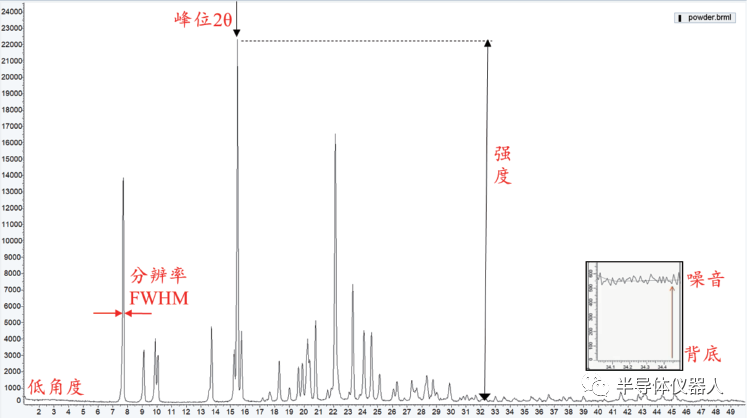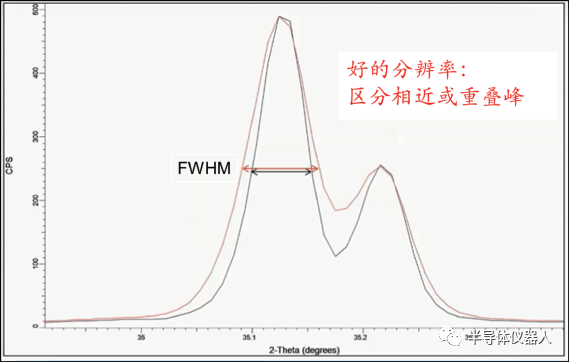
Introduction to XRD applications - Data quality
2024-01-08 10:00As one of the important means of material structure characterization, XRD is widely used in materials, physics, chemistry, medicine and other fields. In order to obtain accurate analysis results, or explore more structural information, the quality of x-ray diffraction data is the foundation, but also a key part of the analysis of XRD patterns.

Fig1. Composition of XRD pattern
x-ray diffraction pattern components and corresponding physical parameters:
1. Peak position: (1) Accurate. (2)Space group. (3)Cell parameters.
2. Peak strength: (1) High strength. (2) Crystal structure. (3) Quantitative analysis.
3. Peak shape: (1)FWHM is small and peak shape is symmetrical (Fig 2). (2) Instrument broadening. (3)Sample microstructure.
4. Back and bottom: (1) Low back and bottom, gentle low Angle, high peak-to-back ratio, high signal-to-noise ratio. (2)Weak peak detection limit (Fig3). (3) Amorphous diffuse peak, "crystallinity".

Fig2 XRD patterns with different resolutions
Fig3 Peak-to-back ratio and signal-to-noise ratio have weak peaks
X-ray diffraction data quality and test efficiency
1.High quality data acquisition is often inversely proportional to test efficiency and is very time consuming. Fine instrument debugging, reasonable hardware selection and long testing time.
2.Not every application requires very high data quality. Appropriate hardware and measurement conditions should be selected according to different application needs to obtain corresponding data quality and improve test efficiency.
